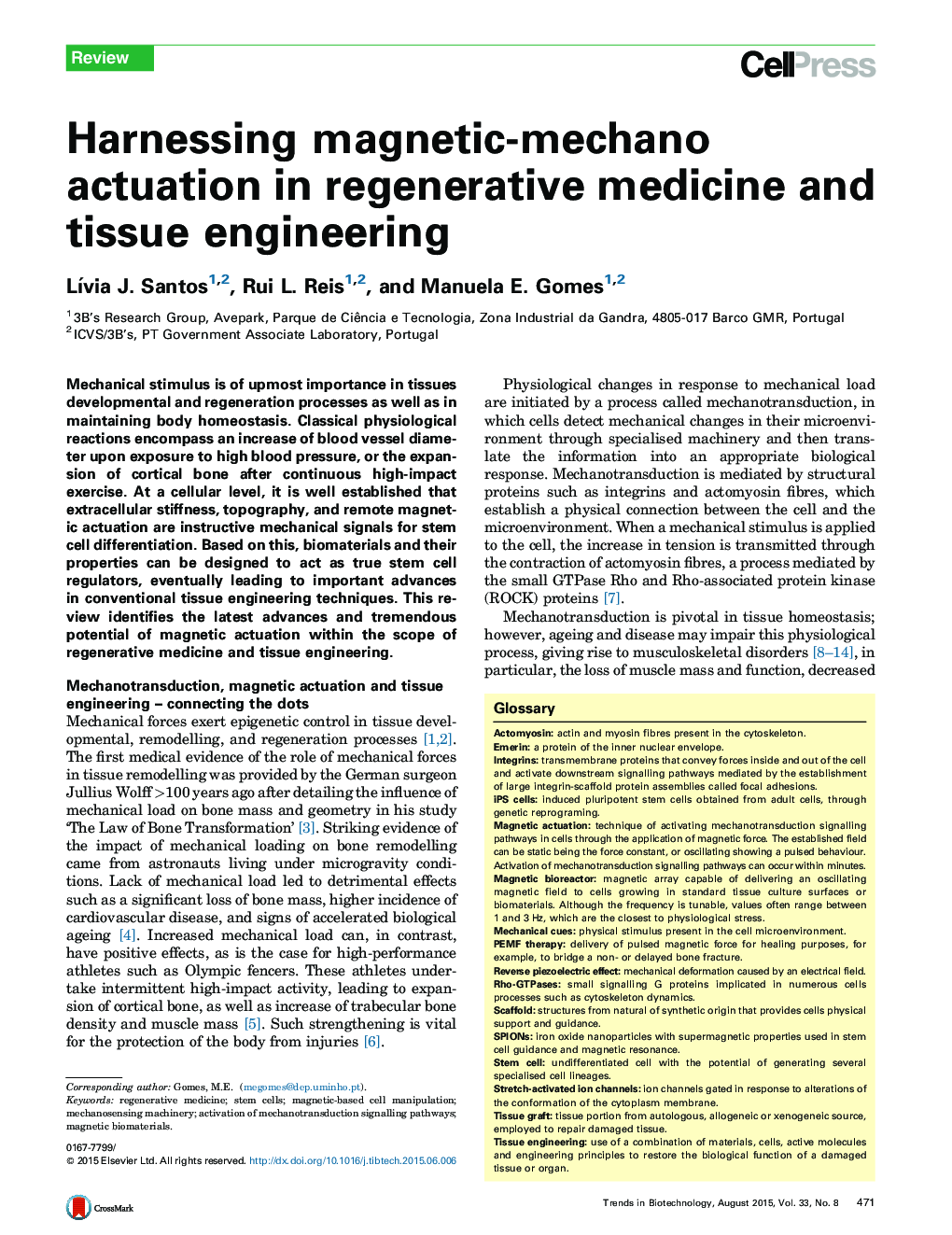| Article ID | Journal | Published Year | Pages | File Type |
|---|---|---|---|---|
| 36920 | Trends in Biotechnology | 2015 | 9 Pages |
•Magnetic actuation is a valuable toolbox to remotely guide, engraft, and differentiate stem cells.•Magnetic-assisted tissue engineering makes possible the fabrication of tissue grafts scaffold-free from mesenchymal and induced pluripotent stem cells.•Combination of magnetic materials and magnetic force is a promising platform for the delivery of drugs and cells on demand.
Mechanical stimulus is of upmost importance in tissues developmental and regeneration processes as well as in maintaining body homeostasis. Classical physiological reactions encompass an increase of blood vessel diameter upon exposure to high blood pressure, or the expansion of cortical bone after continuous high-impact exercise. At a cellular level, it is well established that extracellular stiffness, topography, and remote magnetic actuation are instructive mechanical signals for stem cell differentiation. Based on this, biomaterials and their properties can be designed to act as true stem cell regulators, eventually leading to important advances in conventional tissue engineering techniques. This review identifies the latest advances and tremendous potential of magnetic actuation within the scope of regenerative medicine and tissue engineering.
